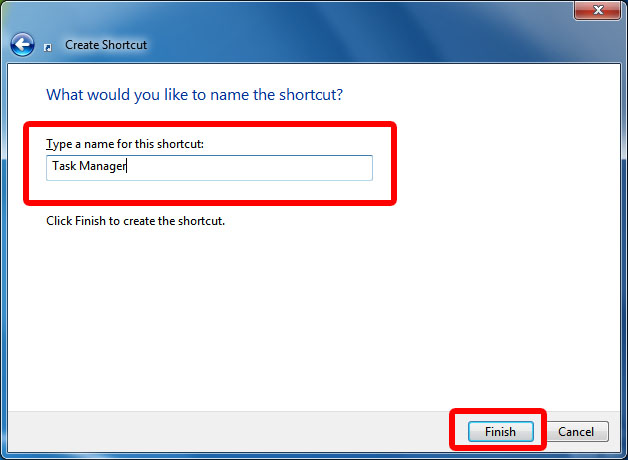One of the main differences that we have seen between Windows 7/Vista and XP, is accessing the Windows Task Manager. Task manager displays the performance, process, and services that are currently running on your computer. You can use the Windows Task Manger to monitor your computer’s performance or to close a program that’s not responding.
How to access Task Manager faster in Win 7 and Vista
In the older versions of Windows, as you know, you have to press "Ctrl + Alt + Delete" to open Task manager. But in Win7 and Vista, when you press these keys, the Windows Security screen will be opened. After selecting "Start Task Manager", you can access its window. So you need two steps to open Task manager.
But if you want to open the Task Manager directly and faster than you can press "Ctrl + Shift + Esc" and surprisingly, the majority of the Windows users doesn't know about this shortcut.
How to create a shortcut for Windows Task Manager
Another way to access the Task Manager faster is to create a desktop shortcut so it will be much easier for you to open the Task manager just by double-clicking on its icon. Right-click on an empty space on the desktop and from the menu, select New>Shortcut. Under the "Type the location of the item", enter
C:\Windows\System32\taskmgr.exe
and click on the Next button. In the next window, assign a name for your shortcut and hit the Finish button.
How to access each process file in the hard disk using Task Manager
One more bonus that I want to give you before I finish this tutorial is how to find each process file location in your system hard disk using the Task Manager. If you go to Processes tab in the task manager, you will see a list of all currently running processes in Windows. Right-click on each process and from the menu, select "Open File Location". The Windows will take you to the process file location.
If the "Open File Location" option is not active, you have to click on the Show processes from all users button.








 Tag
Tag

 Home
Home Privacy Policy
Privacy Policy Contact
Contact About
About Powered by Blogger.
Powered by Blogger.